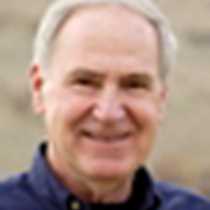Astoria & Fort Clatsop
We all awoke this morning to a perfect Astoria day—foggy, rainy, chilly—Lewis and Clark weather, traditional and historical. No weather system could prevent us from visiting the Columbia River Maritime Museum, located next to the National Geographic Sea Bird on the same dock. This museum is one of the finest of its kind anywhere in the world. Tasteful displays trace the maritime history of this region from Lewis and Clark to the present—explorers, traders, commercial fishers, wartime activities, modern navigation. This place turns even the most jaded among us into naval activists. The museum is open all day long to Lindblad guests.
Perhaps we all had been waiting for a week to visit Fort Clatsop—the one site on the Columbia where we knew the Expedition spent a fretful winter. Fretful, because Lewis and Clark hadn’t planned to be there; they missed the trading season; the weather was uncooperative (it rained for 131 of 137 days on the Columbia River estuary); the diet consisted of rotten elk and maybe a few roots; the local Indians were standoffish; there was sand in the food and fleas in the bedrolls. But the Visitors Center has wonderful displays and books for sale, and the reconstructed fort cannot but excite admiration and wonder. How could 33 people crowd into 2500 square feet of livable space from Christmas 1805 to March 23, 1806 without getting cabin fever? William Clark said they lived about as well as they had a right to—a statement dripping with unintended sarcasm.
In the afternoon, some stayed aboard the National Geographic Sea Bird or visited downtown Astoria—a marvelous old fishing and canning town spiffed up for tourism. Many others visited the Lewis and Clark Interpretive Center at Cape Disappointment, on the Washington side. Five undaunted travelers, either intrepid or stupid, walked through pouring rain to a Pacific Ocean beach at Beard’s Hollow. “Once more, unto the beach . . . “ If Lewis and Clark could visit the Pacific, so could we. Afterwards, the staff dryer aboard the ship was a life-saver.
On this final evening of an unforgettable week, it would be remiss not to mention some of the many who made our journey memorable and educational. Captain George Coughlin was everywhere at once. Expedition Leader Lee Fleischer buoyed everyone’s optimism. Naturalist Verne Huser never saw a bird he didn’t identify. Head Chef Ryan Foley added weight to us all. Exercise-ologist Susan Weber kept us on an even keel. Do we really have to walk 100 yards to work off every single M&M consumed? All in all, this was the fastest week in everyone’s lives, and our Columbia River adventure, “In the Wake of Lewis and Clark” ended all too soon.




